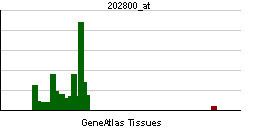Species Human Entrez 6507 | Human Mouse Ensembl ENSG00000079215 | |
 | ||
Aliases SLC1A3, EA6, EAAT1, GLAST, GLAST1, solute carrier family 1 member 3 External IDs OMIM: 600111 MGI: 99917 HomoloGene: 20882 GeneCards: SLC1A3 | ||
Solute carrier family 1 (glial high-affinity glutamate transporter), member 3, also known as SLC1A3, is a protein that, in humans, is encoded by the SLC1A3 gene. SLC1A3 is also often called the GLutamate ASpartate Transporter (GLAST) or Excitatory Amino Acid Transporter 1 (EAAT1) .
Contents
GLAST is predominantly expressed in the plasma membrane, allowing it to remove glutamate from the extracellular space. It has also been localized in the inner mitochondrial membrane as part of the malate-aspartate shuttle.
Mechanism
GLAST functions in vivo as a homotrimer. GLAST mediates the transport of glutamic and aspartic acid with the cotransport of three Na+ and one H+ cations and counter transport of one K+ cation. This co-transport coupling (or symport) allows the transport of glutamate into cells against a concentration gradient.
Tissue distribution
GLAST is expressed throughout the CNS, and is highly expressed in astrocytes and Bergmann glia in the cerebellum. In the retina, GLAST is expressed in Muller cells. GLAST is also expressed in a number of other tissues including cardiac myocytes.
Clinical significance
It is associated with type 6 episodic_ataxia.
Pharmacology
DL-threo-beta-benzyloxyaspartate (TBOA) is an inhibitor of the excitatory amino acid transporters.
Selective inhibitors for GLAST have recently been discovered based on 25 combinations of substitutions at the 4 and 7 positions of 2-amino-5-oxo-5,6,7,8-tetrahydro-4H-chromene-3-carbonitril.
